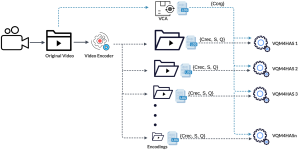We are happy to announce that our paper “EnergyLess: An Energy-Aware Serverless Workflow Batch Orchestration on the Computing Continuum” (by Reza Farahani and Radu Prodan) has been accepted for IEEE CLOUD 2025, which will take place in Helsinki, Finland, in July 2025.
Venue: IEEE International Conference on Cloud Computing 2025 (IEEE CLOUD 2025)
Abstract: Serverless cloud computing is increasingly adopted for workflow management, optimizing resource utilization for providers while lowering costs for customers. Integrating edge computing into this paradigm enhances scalability and efficiency, enabling seamless workflow distribution across geographically dispersed resources on the computing continuum. However, existing serverless workflow orchestration methods on the computing continuum often prioritize time and cost objectives, neglecting energy consumption and carbon footprint. This paper introduces EnergyLess, a multi-objective concurrent serverless workflow batch orchestration service for the computing continuum. EnergyLess decomposes workflow functions within a batch into finer-grained sub-functions and schedules either the original or sub-function versions to appropriate regions and instances on the continuum, improving energy consumption, carbon footprint, economic cost, and completion time while considering individual workflow requirements and resource constraints. We formulate the problem as a mixed-integer nonlinear programming (MINLP) model and propose three lightweight heuristic algorithms for function decomposition and scheduling. Evaluations on a large- scale computing continuum testbed with realistic workflows, spanning AWS Lambda, Google Cloud Functions (GCF), and 325 fog and edge instances across six regions demonstrate that EnergyLess improves cost efficiency by 75 %, completion time by 6%, energy consumption by 15%, and CO2 emissions by 20% for a batch size of 300, compared to three baseline methods.











